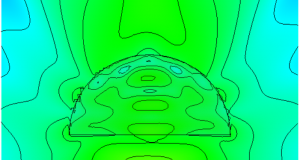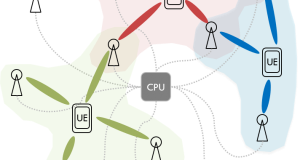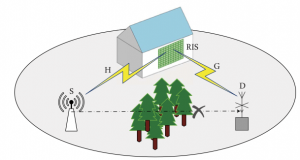Published on: May 27, 2022 Our “Meet The ESR” series continues with it’s 4th post. This time we are meeting Enver from UNIPD. Let’s get to know him better. Who am I? I am Enver and I’m from Azerbaijan although I was born and raised in North Cyprus. I have always liked to work on the application side of things ...
Read More »Blog
Meet The ESR: Javad Ebrahimizadeh
Published on: May 13, 2022 This week we meet Javad Ebrahimizadeh, ESR 2 from KU Leuven, Belgium. Tell us about yourself A person who smiles, who is loving and who makes mistakes. I enjoy socializing with people once in a while and at the same time I also enjoy being alone. I have many friends because of my cheerfulness. My ...
Read More »Meet The ESR: Amir Ashtari Gargari
Published on: Apr 29, 2022 In this post, we continue with getting to know our ESRs. This week we meet Amir Ashtari Gargari, ESR 10 from University of Padova. Tell us about yourself and where you are from? I’m Amir. I am a 26 years old Ph.D. student at UNIPD. I got married last year, and I live with my ...
Read More »Meet The ESR: Juan Sanchez
Published on: Apr 15, 2022 For today’s blog post, we are meeting Juan Sanchez, ESR 3 from Lund University. Lets learn more about him and his work. Who am I? I am Juan (Juan David just in case you know lots of generic Juan’s 🙂 ), a Colombian guy who likes dancing, Muay Thai, languages and hanging out. I have ...
Read More »Dielectric Lenses for mmWave
Published on: Apr 6, 2022 The EM waves that are being thoroughly exploited for next-generation high-speed telecommunications, include mmWaves, Terahertz, and light. They are all oscillations in the electromagnetic field, and as such, they share a lot of common properties. In particular, in this article, we will focus on one of the most well known properties we see in light: ...
Read More »Network Slicing
Published on: Mar 25, 2022 Network slicing is one of the promising innovations to push forward the frontier of 5G and beyond mobile communications. It permits Mobile Network Operators (MNO) to share their physical infrastructures for simultaneous deployment of multiple independent logical networks, each managed with respect to their specific service requirements. Different services, such as automotive, tactile internet, or ...
Read More »Cell-free MIMO in mmWave networks
Published on: Feb 18, 2022 Welcome to the newest edition of the MINTS blog! In this blog, we will discuss the feasibility and challenges of implementing the cell-free architecture in the mmWave frequency band. What is “cell-free”? As the name implies, the cell-free concept is the opposite of cellular network architecture which has a network-centric paradigm. In the traditional cellular ...
Read More »Beamforming architectures in Beyond-5G mmWave Networks
Published on: Feb 4, 2021 Massive Multiple-Input Multiple-Output (MIMO) at mmWave is a breakthrough technology for the next generation of communication. Massive MIMO uses a large number of antenna elements to focus the energy towards the receiving antenna, while the mmWave band provides more bandwidth for communication. The main challenge in shifting towards mmWave is the path loss that occurs ...
Read More »What is a PhD? – From a PhD student’s view
Published on: Jan 14, 2022 A PhD or Doctor of Philosophy is an excellent opportunity to pursue research as a career and learn about the academic world and cutting-edge technologies. Recent Master or even Bachelor graduates are allowed to take this path. It is also a great way to connect with industry and have another path to pursue once the ...
Read More »Challenges in RISs
Published on: Oct 1, 2021 There is no doubt that wireless communication is essential to our daily lives. We understood this even more during the pandemic. The world has been combating the COVID-19 pandemic for a long time now and what has become obvious to all of us is the importance of technology and robust connectivity in our lives. When ...
Read More »










